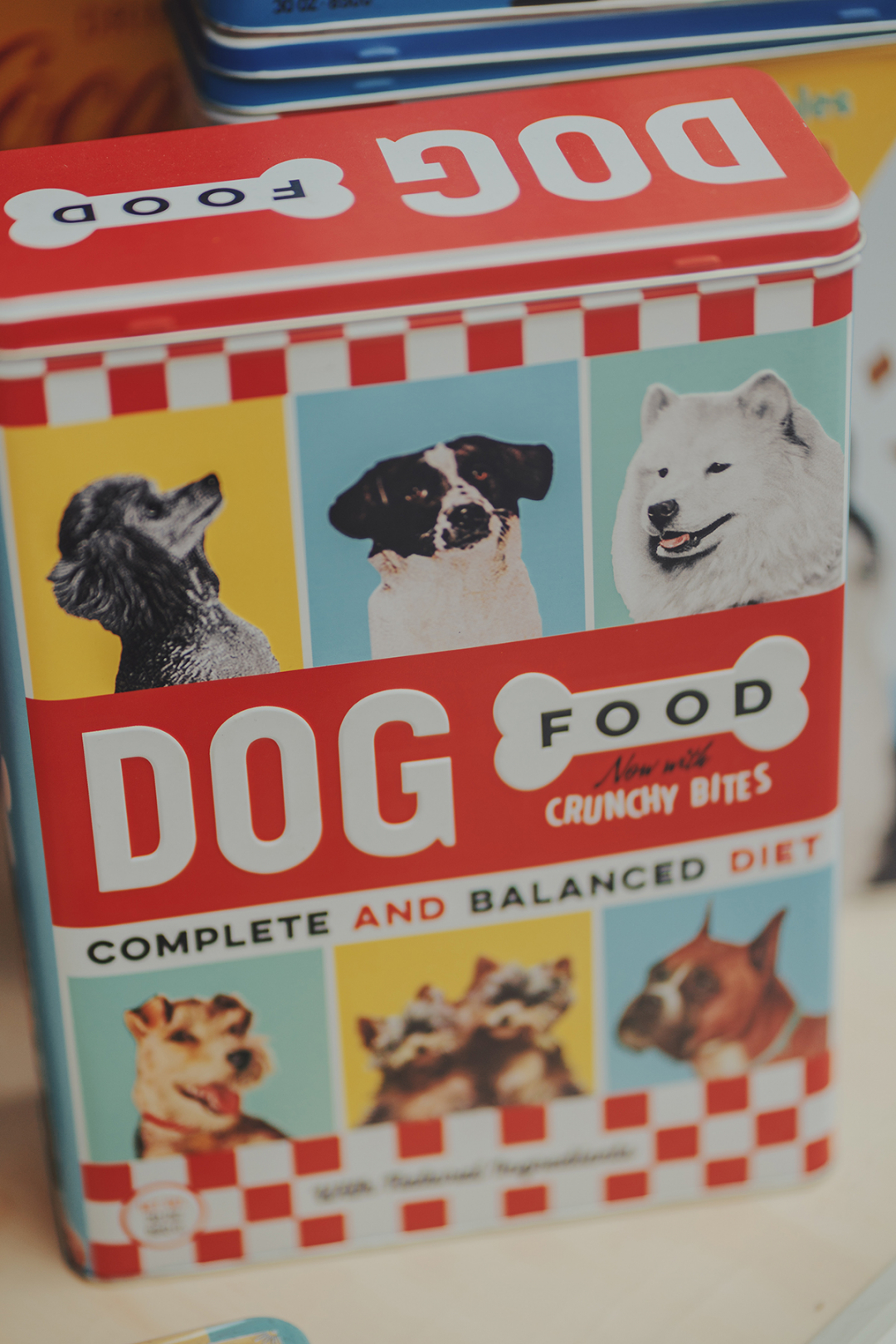The FDA (U.S. Food and Drug Administration) is currently looking into claims that grain-free dog food may be linked to increased rates of DCM (dilated cardiomyopathy) which is a form of heart disease. The popularity of grain-free food is linked to another common dog food concern: allergies. But heart disease and grain-free is just the tip of the iceberg. To really explain why heart disease and allergies from dog food is now a thing, we need to back up.
Without fillers, it wouldn’t be kibble
It’s important to understand a basic concept about kibble. Any meat source has to go through quite the process to become a perfectly shaped kibble. You can’t just dry out the meat and cut it. Your beef turns into beef jerky and then gross, crunchy beef jerky that even your dogs will refuse (if you’ve ever left open a bag of beef jerky, you know what I’m talking about).
So in order to produce shelf-stable, well-shaped kibble with a perfect mix of ingredients in each bite, manufacturers go through a complicated drying, binding, and extrusion process. Binding something like meat into a kibble shape requires starchy fillers. That means it is impossible to make an FDA approved kibble from meat only. You have to include some kind of starch.
Dogs don’t need starch
The truth is that dogs don’t need starches to survive. Whether starch is bad or good is another topic entirely. But it’s not necessary for a dog’s survival. However, starch is necessary for the number one selling form of dog food: good old kibble.
Children of the corn
Up until recently, the most widely used filler in dog food was corn. Those little golden ears are extremely cheap and make awesome binders for kibble. But as owners and breeders started “optimizing” their dog foods (perhaps feeling guilty while munching on avocado toast), corn became a vilified ingredient.
Blogs and breeders started making statements. It’s just a useless filler! Your dog might be allergic to corn! Corn has to be processed into corn meal first—processing is bad! Eventually the hype caught on and dog food companies followed suit: no corn. Corn was phased out in favor of another grain: rice.
Rice, rice, baby
Even though rice is arguably the most benign grain in existence, the wave of hysteria over dog food ingredients didn’t stop. Grains are bad! Wolves don’t eat grains, so dogs shouldn’t either! And so the dog food industry pivoted yet again: to grain-free foods.
Grain-free for you and me
Now think back to the original point: all dry kibble requires fillers. Starchy binders are an integral part of the kibble production process. You can’t feed dry without them. Now that corn, rice, and wheat were off the table, food manufacturers turned to other ingredients. Peas, lentils, legumes, even kelp in some cases. Guess what? Wolves don’t normally chow down on chickpeas either. But that “grain-free” label is powerful and makes owners feel that they are doing something right while still feeding convenient dry food.
Now back to heart disease
It’s not clear exactly why grain-free kibbles have a higher link to heart disease than corn-rice-and-wheat bound kibbles. Some speculate that grain-free foods lack taurine. Others say that peas, lentils, and legumes bind up necessary vitamins and minerals so the dog can’t absorb them, resulting in a malnourished dog.
Now the old-school foods with corn and rice like Royal Canin and Fromm are having a hey-day because their grainy foods, ostensibly, don’t cause heart disease. But that’s not the whole story.
Allergies please
And how does this relate to allergies? Well, reports of dog food allergies are going up. Now, pause for a second. These aren’t really allergies. They’re food sensitivities. An allergy means your dog is writhing on the floor in need of an epi-pen. A food sensitivity is when certain foods trigger skin irritations and bowel upsets. And people are reporting more and more food sensitives such as, “Rufus scratches his ears obsessively after eating his chicken Royal Canin kibble,” or “Fluffy has armageddon diarrhea after beef-based Blue Buffalo.”
Surprising to some, the sensitivity reports are almost always due to protein sources, not the previously demonized corn and other starches. Corn and rice have extremely low rates of allergies compared to proteins like chicken and beef.
No dogs in the house
There are a few reasons why dog protein sensitivities are increasing. Some of it has to do with increased dog ownership and owners paying more attention to their dogs. Many of us had dogs when we were kids that were stuck out in the yard and fed whatever was cheapest at the supermarket. If Buddy the mutt was constipated or scratched his ears too much, well, we weren’t around to think much of it. Now that Bordeaux the purebred French Bulldog goes with me to work everyday, his stinky poops and excessive scratching become a workplace nuisance. Owners today will notice digestive particulars of their canine friends much sooner.
Dances with wolves
Another reason that protein sensitivities are increasing is that high-protein foods are in vogue. Feed your dog like the wolf he was born to be, scream dog food manufacturers as they squeeze more protein into kibbles with names like High Prairie and Wilderness. And now meat meals are used, such as “chicken meal,” which is even higher protein than plain chicken. No one stops and thinks that your Border Collie isn’t even fulfilling his basic genetic role as a sheepdog when he’s crated for 8 hours a day, 5 days a week. What does he need all that protein for?
Stomach loitering
Either way, high protein means more potential for allergies—when it’s cooked. When you cook a meat protein, it denatures, which means that protein cross-links form. Think about a really overcooked steak. It is tough and hard because there are cross-linked proteins everywhere. All meat in kibble is cooked, and then it is extruded into a pellet. The extrusion process denatures the meat even further. So kibble-based food is twice denatured. And denatured protein is harder to digest, therefore more likely to cause digestive upset.
The problems don’t stop there. When a protein like dried beef kibble is harder to digest, some of it doesn’t finish the race in the digestive system. Partially digested proteins lurk around in the gut, waiting for something to happen to them. Bodies are naturally suspicious of foreign proteins. Now when the protein is digested normally, it doesn’t hang around long enough for the body to worry. But when a half-digested bit of pork is loitering, the body flags it as a suspicious invader. Then you get an immune response, and eventually, allergies to that particular protein.
Winner winner chicken dinner
Not all ingredients are equal in terms of allergies. Some ingredients are more likely to be antigenic (provoke an immune/allergic response) than others. The number one antigen is wheat. Most dog foods worth a dang haven’t had wheat in them for decades. But guess what number two and number three are? Chicken and beef. The very top two proteins used in dog foods.
So a chicken kibble or a beef kibble is taking proteins most likely to elicit an allergy and then making it more antigenic by putting it through an extreme denaturing and extrusion process. And then perhaps stuffing in more protein so we can pretend our Siberian Husky is a wolf on Game of Thrones. Grainy, grain-free, doesn’t matter. Dried kibble, especially if it’s high protein and contains chicken or beef, is the most likely food to create new food sensitivities in dogs.
What’s a pet parent to do?
There’s a lot of information out there, and a lot of highly invested companies trying to sway you one way or another. You’ll be happy to know that this blog, at least, has no investment in your dog’s food one way or another. My only hope is that this information leads you to do what is best for you and your fur family. But here are some tips to help consolidate the data dump and scare stories into real solutions.
If you’re worried about DCM
While we don’t have all the information yet, if you have a dog prone to DCM, then you may want to switch back to grainy pet foods. At least until more research is done and we know exactly what is causing increased levels of the disease. Unfortunately we can’t give you a nice and easy list of brands. Most brands nowadays have multiple lines of dog food. Some grain-free, some not. And the formulations are changing all the time.
To avoid the potential problems of peas, lentils, and legumes in grain-free foods, you’ll have to look for these ingredients on individual labels. Here is a list of common fillers in grain-free foods that may be problematic:
- Peas
- Pea protein
- Pea meal
- Snow peas
- Snap peas
- Chickpeas / garbanzo beans
- Beans
- Garbanzo beans / chickpeas
- Kidney beans
- Black beans
- Soybeans
- Pinto beans
- Navy beans
- Potatoes
- Sweet potatoes / yams
- Yellow potatoes
- Nuts
- Almonds
- Peanuts
- Cashews
- Lentils
And if you think that low taurine has something to do with it, the following ingredients are more likely to be in a low-taurine food:
- Beets
- Beet pulp
- Lamb
- Rice
- Rice bran
- Soybeans
Breeds most affected by dilated cardiomyopathy (DCM):
- Afghan Hound
- American Cocker Spaniel
- Boxer
- Dalmatina
- Doberman Pinscher
- English Bulldog
- English Cocker Spaniel
- Great Dane
- Irish Wolfhound
- Newfoundland
- Saint Bernard
- Scottish Deerhound
If you’re worried about allergies
The number one way to prevent food allergies: don’t feed kibble. Now, I’m not a kibble hater. Nor am I a rabid raw feeding proponent. I believe that owners need to figure out what works best for them and their dogs. But there’s no way around it: kibbles are more antigenic than wet foods or fresh foods. If you really want to stamp allergies in the dust, throw out that kibble.
If the no-kibble life is an impossibility, you can try using kibbles with less antigenic proteins. This means that dogs are less likely to develop an immune response to these ingredients, even in yucky extruded denatured kibble form. Please avoid chicken and beef, and read the labels, as both are often used as a secondary protein to fill in a more expensive ingredient like venison.
Less antigenic protein sources (those * starred are likely to be less antigenic but not studied well):
- Boar
- Bison*
- Duck
- Herring
- Lamb
- Oceanfish
- Kangaroo*
- Mackarel
- Pea Protein
- Pork
- Salmon
- Turkey
- Venison
- Whitefish
If you’re ready to move on from kibble, the easiest transition is good old canned food. While the meat in wet food is still denatured from cooking and preservation, it’s not processed nearly as much as dry food. Most allergic dogs will do worlds better on canned food than kibble.
And if you’re truly an idealist, you can always move on to raw feeding. Raw feeding is not for the faint of heart or the slim pocketbook. And there are plenty of companies out there trying to make raw more convenient—at a price. But for truly sensitive dogs, raw feeding may be the only way to provide top-notch nutrition.




